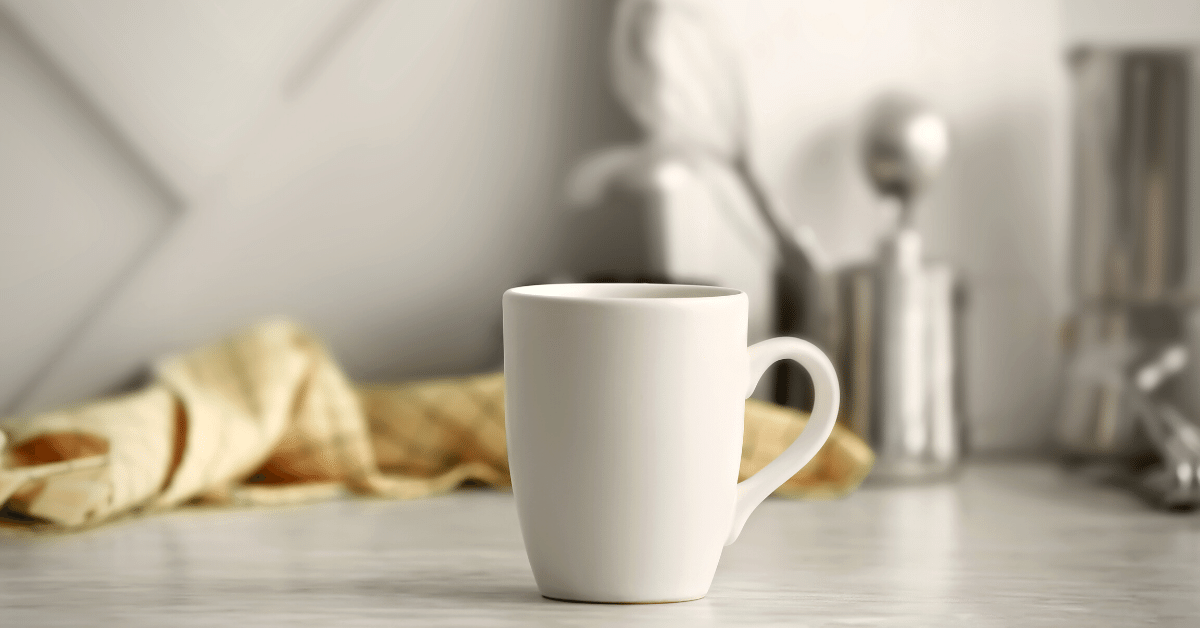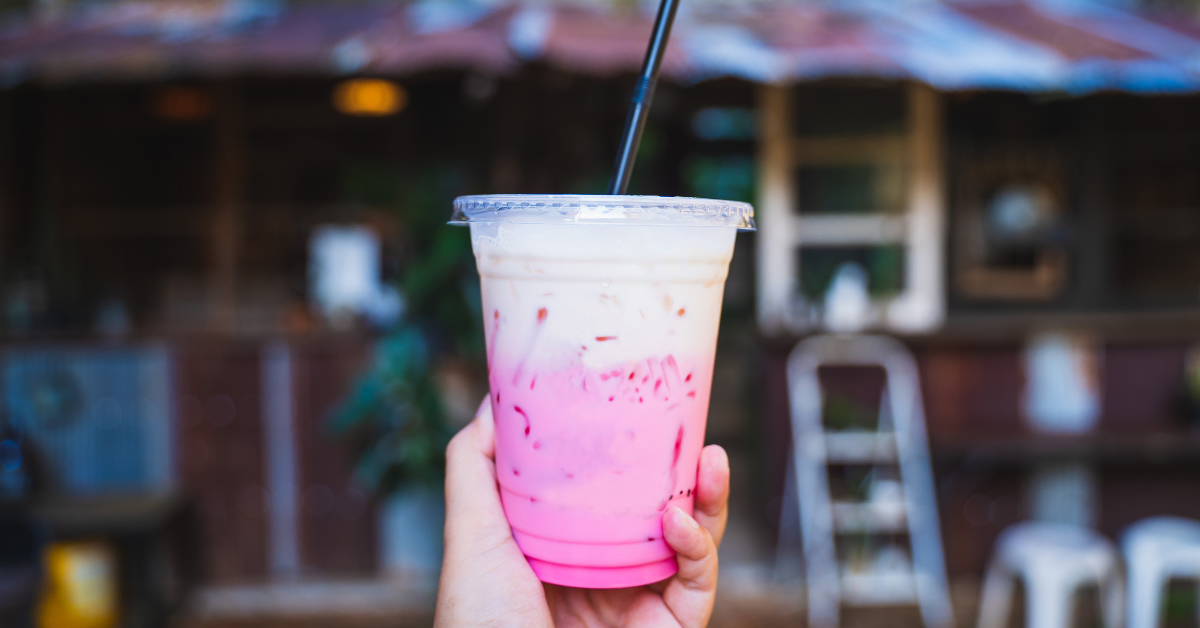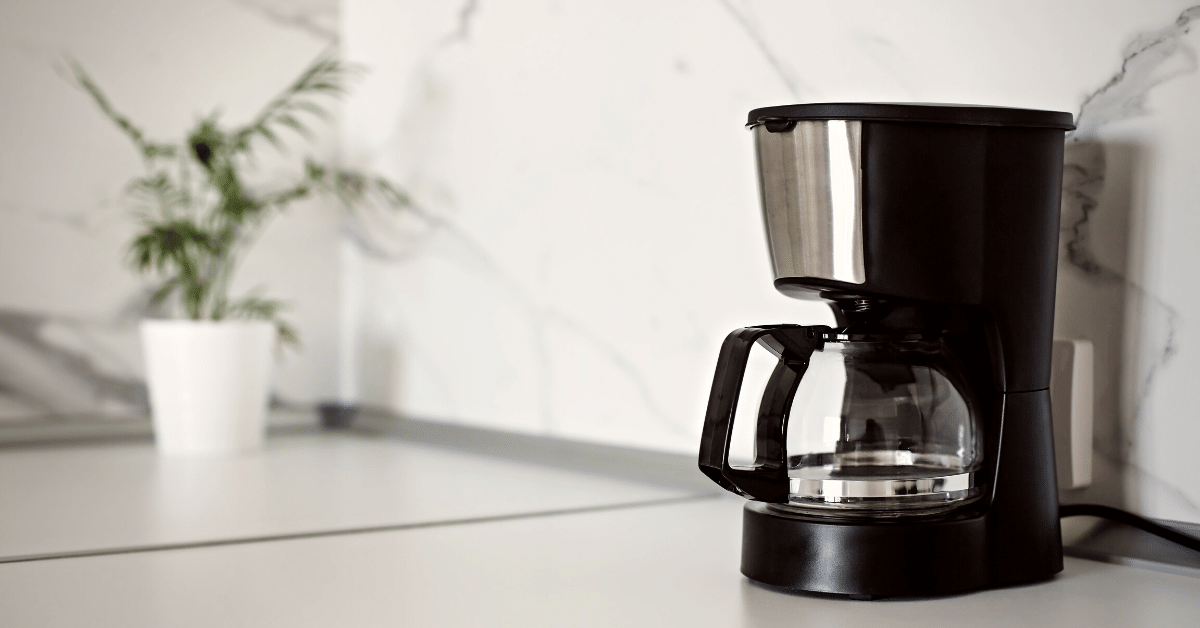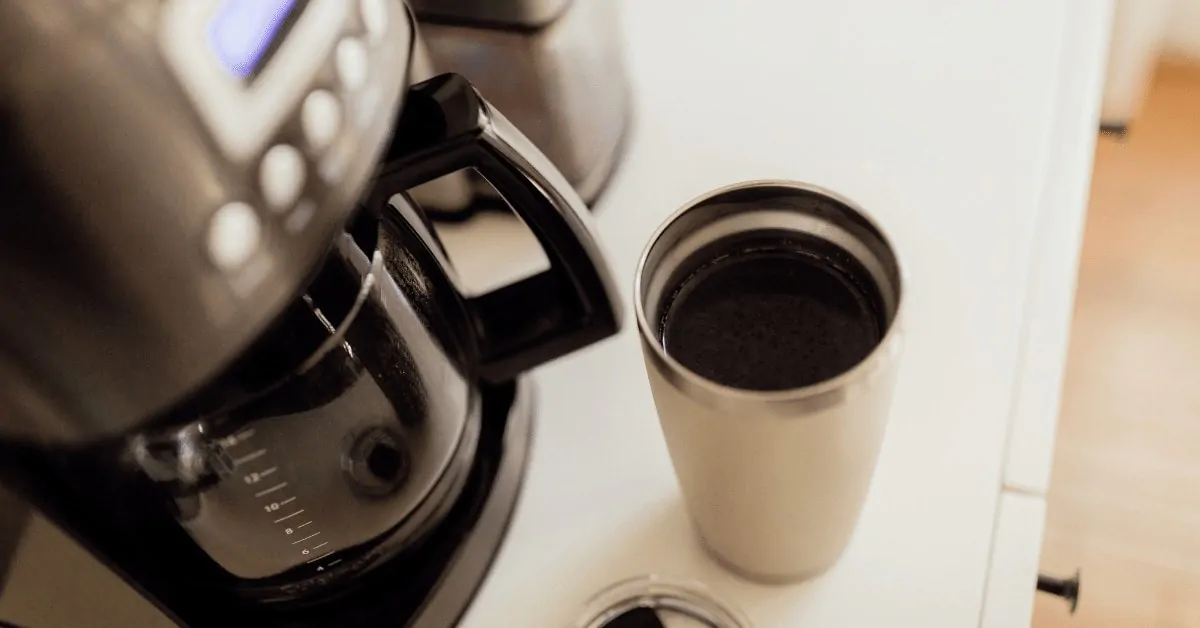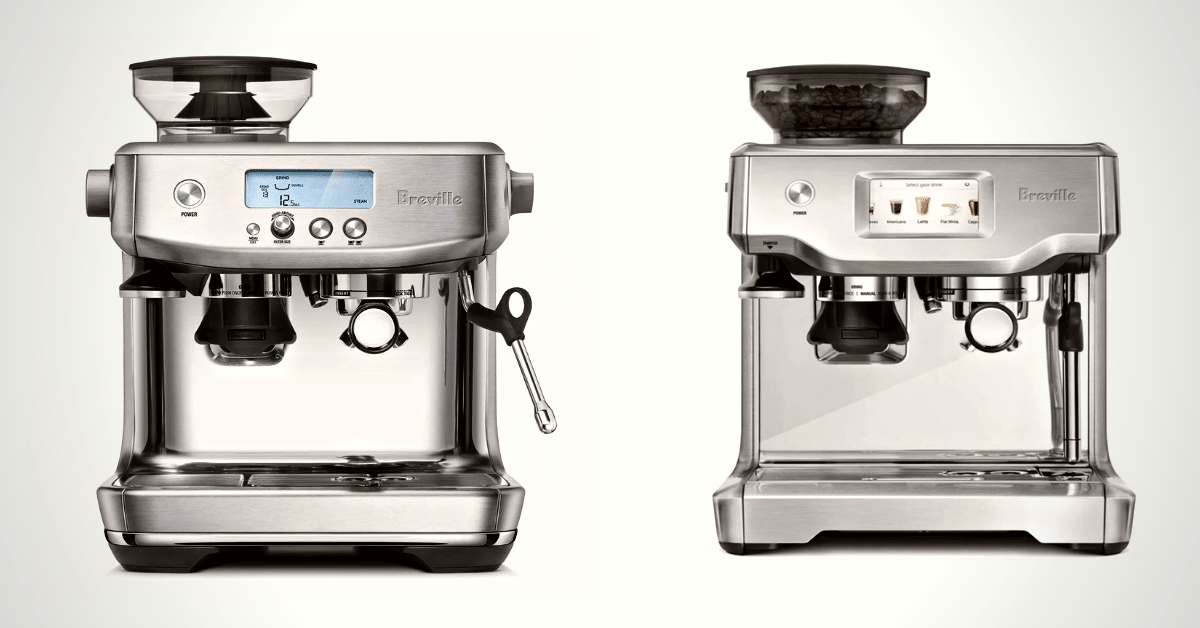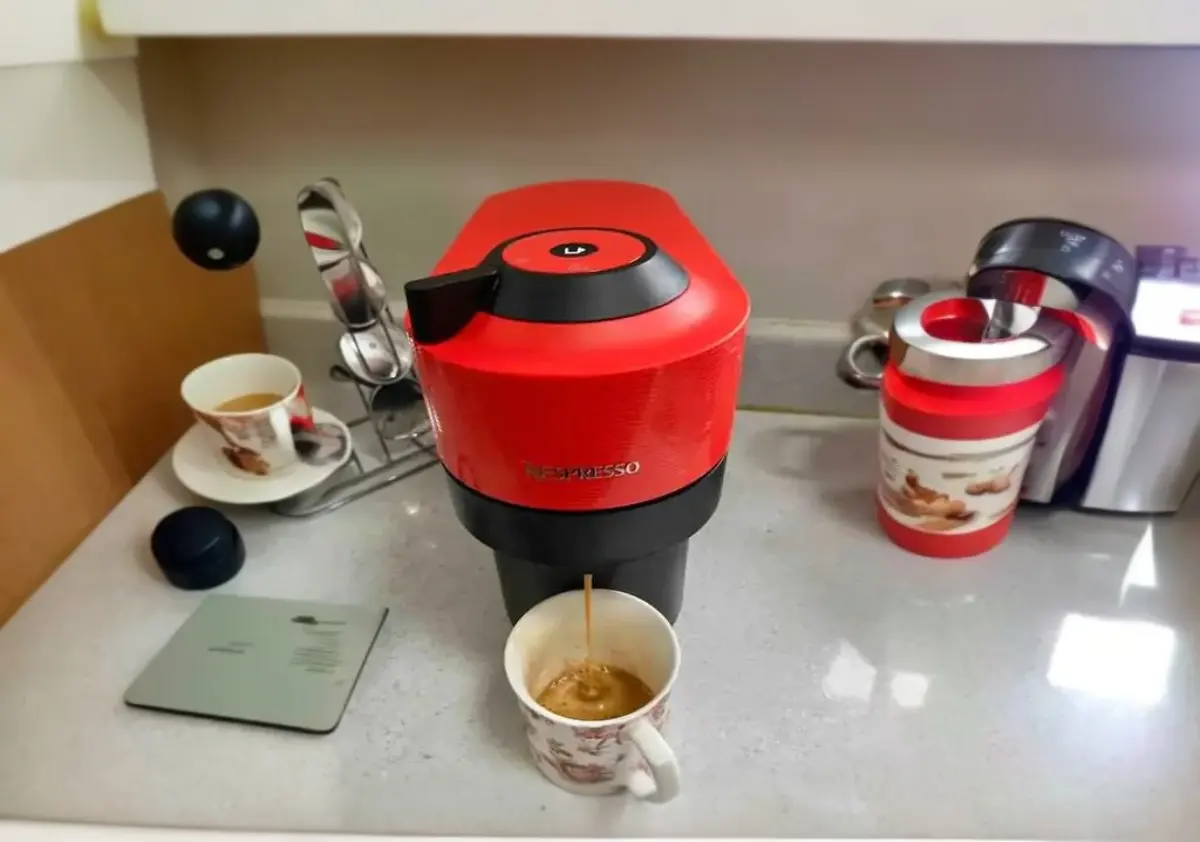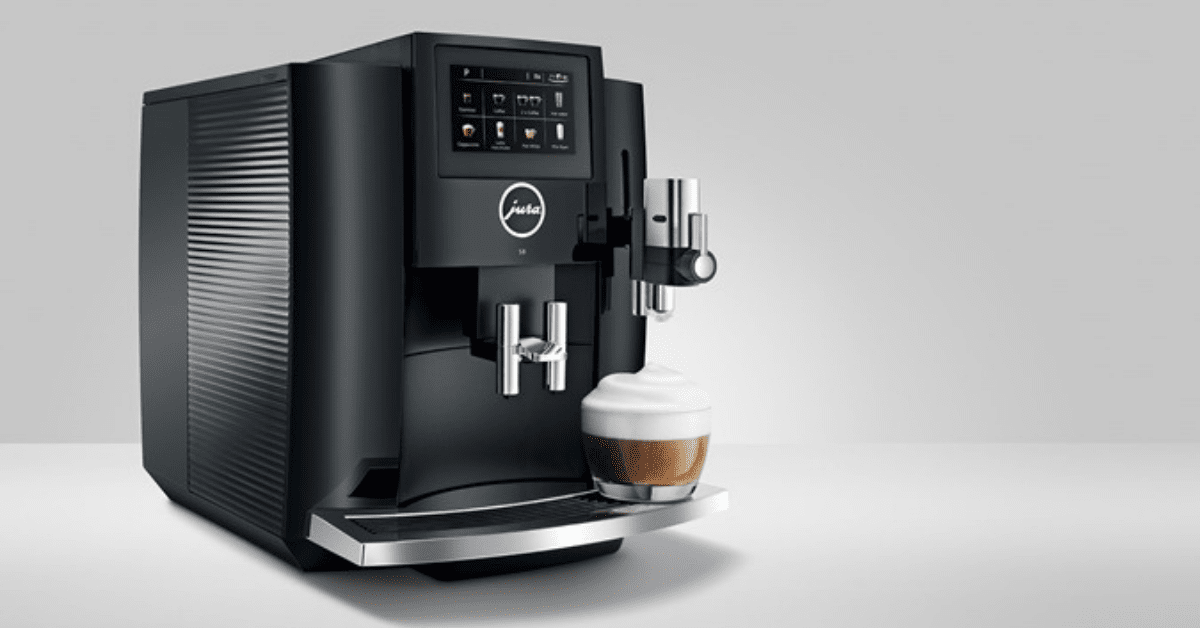Are mugs oven-safe? Jump into our guide and find out which types of mugs you can put in the oven and which you definitely shouldn’t.
Whether you’re trying to make a mug cake or simply warm up your old cup of java, you might be wondering: are mugs oven-safe?
Well, you’ll be relieved to know that they can be.
But that depends on a few factors.
Let’s dive in to find out more.
Can You Put a Mug in the Oven?
In short – yes, but not just any coffee mug.
Only oven-safe mugs can withstand high temperatures.
If you try using a mug that’s not oven-safe, it will shatter when subjected to high heat and steam. In other words, it will make a mess inside your oven that you’ll have to clean up later.
With that being said, you should also know that any mug can explode due to thermal shock.
Pottery expands in heat and contracts in cold temperatures. And when exposed to a sudden variation in temperature, the material can break.
Luckily, you can easily avoid that by gradually introducing heat to pottery.
How Do You Know if a Mug is Oven-Safe?
A manufacturer will print the type of material and any specific information about caring for the product on the bottom of the mug.
Whether a mug is dishwasher, oven, or microwave-safe, you can check that by looking at the symbols, which are pretty intuitive.
For oven-safe products, the symbol is a square with wavey lines inside. In some cases, the symbol can be really detailed, looking just like a drawing of an oven.
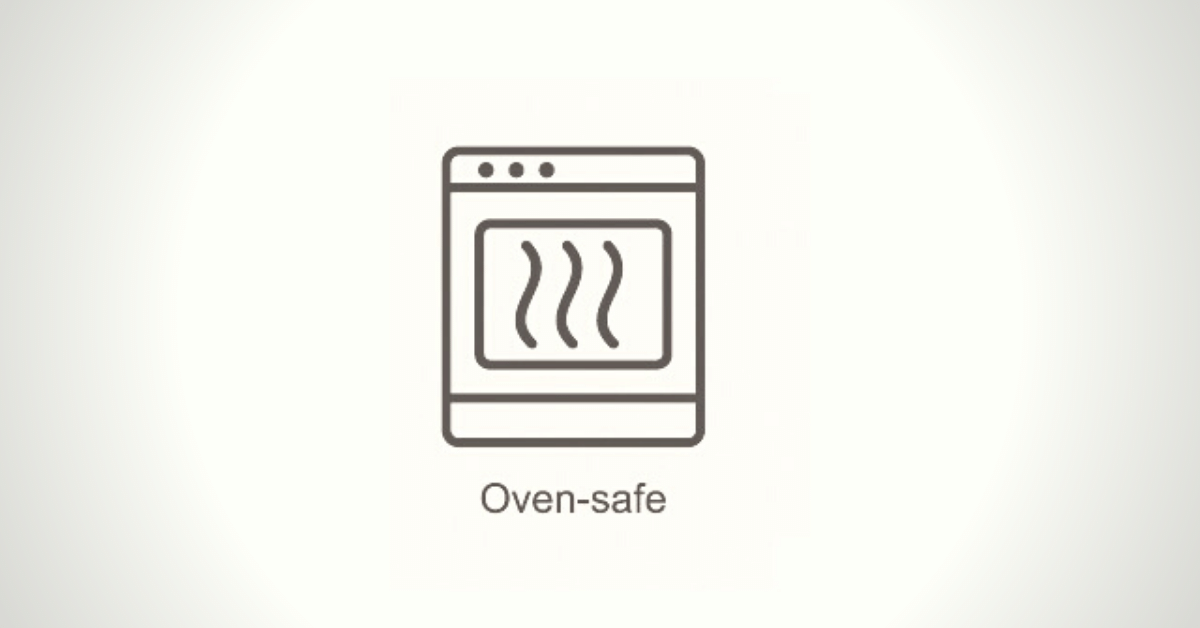
In some cases, there might not be a label on the bottom of the mug. In that case, you should check the packaging it came in. Care instructions should be either on the box or on the paper inside it.
But what if there’s no label?
In that case, treat the mug like it’s not safe for use in the oven unless it’s made of one of the materials listed in the next section. It’s better to be safe than sorry.
PRO TIP
If the mug is decorated (for example, with acrylic paint), you should treat it as unsafe for oven use, regardless of the material. Of course, unless the manufacturer says otherwise.
Does Microwave-Safe Mean Oven-Safe
Well, not necessarily.
You see, many materials are safe for use in microwaves but not in ovens, and vice versa.
For instance, there’s such a thing as microwave-safe plastic. But if you were to put it in the oven, it would melt at too high a temperature.
On the other hand, metal is generally safe to use in the oven. But this material reflects microwaves, and that can damage your appliance.
Finally, borosilicate glass is one of the materials that work with both appliances.
5 Types of Oven-Safe Mugs
Now, you’re probably wondering – what type of mugs are oven-safe?
Obviously, it depends on the material.
Stoneware
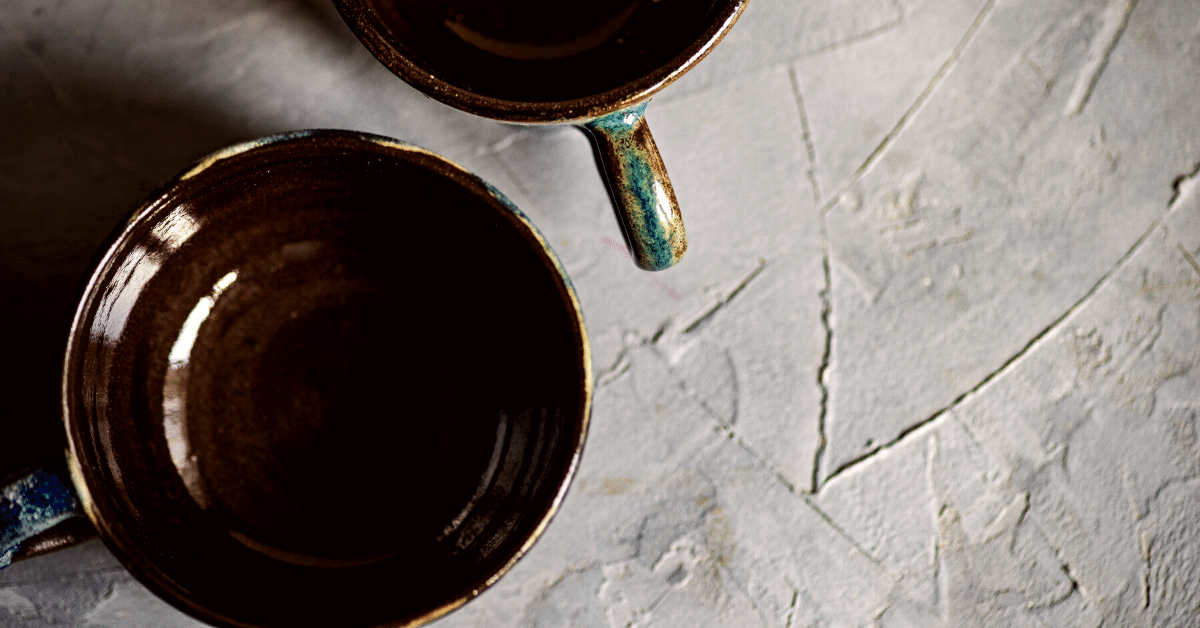
A stoneware mug (a type of ceramic mug) is, hands down, your best option for use in the oven.
Stoneware is a type of pottery fired at relatively high temperatures ranging from 2,010°F to 2,370°F.
We’re talking about temperatures that are hotter than lava. So naturally, this process makes it as sturdy as a stone, hence the name.
As such, stoneware can withstand a high temperature inside your oven without getting cracked.
Stoneware is very dense and nonporous. For that reason, it’s great for baking and warming up coffee as it distributes heat evenly.
Borosilicate Glass
Not all glass is able to withstand high temperatures, but borosilicate glass is.
This type of glass has a very low coefficient of thermal expansion, so it’s pretty resistant to thermal shock.
Plus, given it melts at 3,000°F, the temperature inside your oven is not a problem. In fact, borosilicate glass is a popular option for cookware, since it’s durable, non-toxic, and doesn’t react with acidic food.
Metal
Metal is also a safe option for ovens. Among commonly used metals, aluminum has the lowest melting point at 865°F to 1,240°F. This is still much higher than your oven goes.
However, if you’re using aluminum, it’s best to stick with the cups without a non-stick coating. Temperatures higher than 500°F can damage or cause the coating to lose its properties.
Stainless steel is an even better option for use in the oven. It has a much higher melting point than aluminum, and it distributes heat better.
NOTE
Whichever metal you go with, make sure the mug is 100% metal. You don’t want any plastic parts on it, such as handles, as it would melt.
Enamel
An enamel mug is basically made of metal (aluminum, steel, or iron) and coated with a layer of powdered glass.
What it does is makes it resistant to heat, stains, and scratches.
Generally, enamel cookware is resistant to temperatures below 500°F. So naturally, it makes the mug suitable for use in the oven.
Silicone
Silicone is a synthetic rubber whose properties make it suitable for use in the oven.
It’s non-stick, heat-resistant, and very durable.
Unlike previously mentioned materials, silicone should only be used in temperatures below 428°F.
But that’s generally enough for your needs anyway.
4 Types of Mugs You Should Never Put in the Oven
Okay, so now we know what works great in the oven.
But what about the materials you shouldn’t use in such high heat?
Porcelain
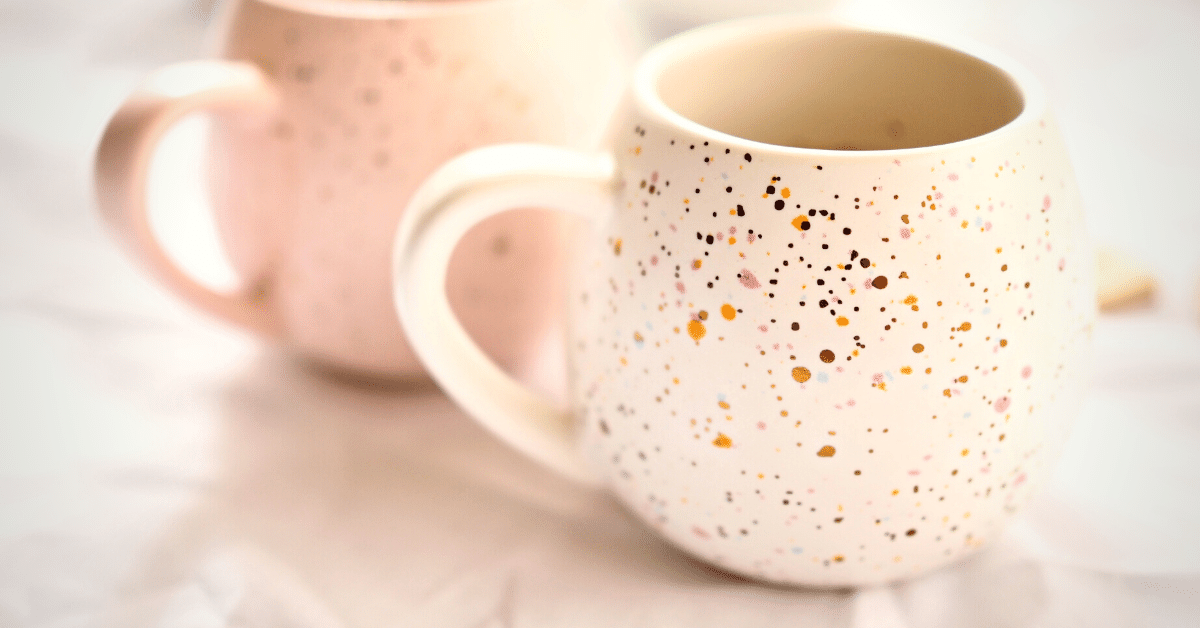
To make this clear – some porcelain is oven-safe. But when it comes to coffee mugs, that’s not the case.
That’s because coffee mugs are much thinner than, let’s say, a pan. And given they’re so thin, they’re much more susceptible to cracking from high temperatures.
Earthenware
This type of pottery is fired at much lower temperatures than stoneware ceramic mugs, so it’s much less durable. It’s also unglazed, so it’s quite porous.
Even though earthenware appears to be thick and strong, that’s not the case when heated up to higher temperatures.
When used in the oven, earthenware easily chips and cracks. In some cases, earthenware might be oven-safe, as long as it’s coated. Of course, that’s only if the manufacturer says so.
Bone China
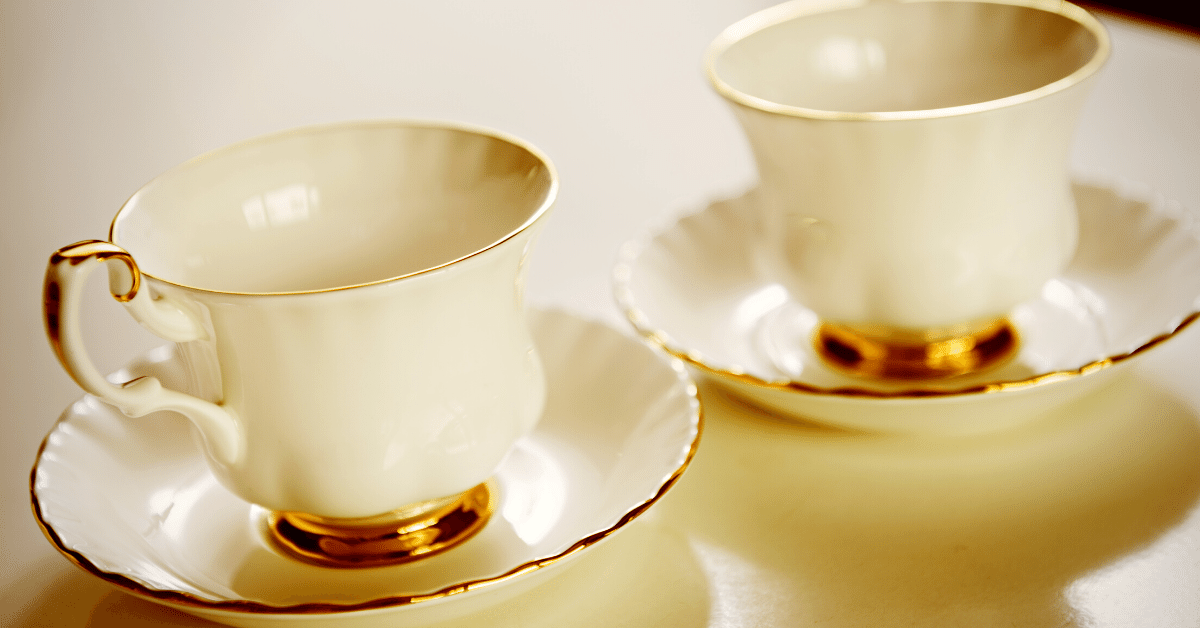
Bone china is yet another material commonly used for cookware. But as far as mugs go, that’s not something you want to use in the oven.
A mug is much thinner than a pan, so it can easily crack when exposed to high heat. Plus, mugs made of this material are commonly decorated, and that also makes them unsuitable for use in the oven.
Plastic
This is probably not surprising. There are tons of different types of plastic, but they all have a pretty low melting point, generally ranging between 320°F and 400°F.
And not just that. But plastic can leech chemicals into your coffee at much lower temperatures. For that reason, this material is absolutely unsuitable for use in the oven.
How Long and at Which Temperature Should a Mug Be in the Oven?
Regardless of the type of oven-safe mug you’re using, you can get away with keeping them for up to 2 hours.
But if you’re using a stoneware mug, it’s important that you avoid thermal shock.
To do that, avoid sudden changes in temperature. So, for instance, you should preheat the mug before putting it in a hot oven.
NOTE
Never put a hot mug inside a fridge. Let it cool down to room temperature first.
And now for the most important question – what’s the maximum temperature?
Well, that depends on the material.
Here’s a quick table to help you out:
| Material | Maximum Temperature |
| Borosilicate glass | 340°F |
| Aluminum | 400°F |
| Silicone | 428°F |
| Enamel | 500°F |
| Steel | 800°F |
| Stoneware | 2,370°F |
In most cases, you won’t need to heat up your oven that high. Therefore, all of these materials will be suitable for your needs.
Are Mugs Oven-safe: To Sum Things Up
Not just every mug is safe for use in the oven.
Sturdy materials, like stoneware, borosilicate glass, metal, enamel, and silicone, are all oven-safe.
Other materials either crack or melt under high temperatures, making them unsuitable for your needs.
If you’re unsure about your mug, check the label underneath the mug or on the packaging. In case it doesn’t say anything, treat it as unsafe for oven use.
Wondering if you can reheat coffee? Check out our article to find out why that might not be a good idea.

